Swiss-French architect, designer, city planner, and painter Le Corbusier was one of the most influential architects and pioneers of the 20th century. His body of work started a new genre and paved the way for the Modern style.
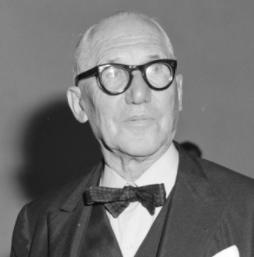
Image source: https://en.wikipedia.org/wiki/Le_Corbusier#/media/File:Le_Corbusier_(1964).jpg
Form and Function
Charles-Edouard Jeanneret-Gris was born in Switzerland on October 6, 1887 to dial painter Edouard Jeanneret and musician Madame Jeannerct-Perrct. At age 13, he left primary school to attend Arts Décoratifs at La Chaux-de-Fonds, where he followed in his father’s footsteps to enamel and engrave watches. Under the tutelage of his teacher, L’Eplattenier, he abandoned watchmaking in favor of art history, drawing, and even architecture. Then, around 1907, after designing his first house, Jeannaret took trips through Central Europe and the Mediterranean, and dreamed he would be a painter. His travels brought him under the wing of Auguste Perret and later Peter Behrens, which shaped his formative years. Finally, In 1917, he moved to Paris and assumed the well known pseudonym Le Corbusier, embracing his philosophy of reinvention as part of his personal identity.
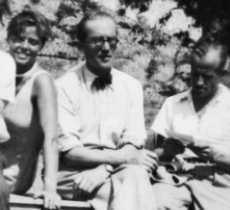
Image source: https://www.smow.de/pics/ca-002-000/desc/ca-lc2sessel-designer-ds.jpg
During his travels, his awareness grew towards three major principles: large collective space and individual compartmentalized space contrast, classical proportions via Renaissance architecture, and landscape as an architectural medium.
In his architecture, he chiefly built with steel, plate glass and reinforced concrete, as he thought they “cleaned and purged” the city with “a calm and powerful architecture.” Additionally, Le Corbusier’s painting approach emphasized clear forms and structures, which corresponded to his architecture.
His Major Achitecture Works
Villa Savoye in Poissy is arguably Le Corbusier’s most renowned work, and a prime example of Modernist architecture. The sleek geometry of the white living space, with its elongated ribbon windows, is supported by a series of narrow columns around a curved, glazed entrance, topped with a solarium. Completed in 1931, the building was revolutionary for its time due to the use of reinforced concrete required for fewer load-bearing internal walls. This allowed for an all-new open-plan design.
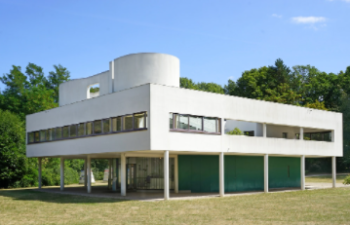
Image source: https://search.creativecommons.org/photos/9decad65-692a-48bf-9a4d-24f6c6e90c77 by dalbera
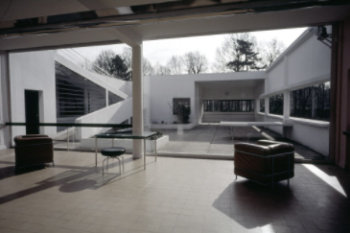
Image source: https://search.creativecommons.org/photos/1f3f9d04-ffd4-4012-92fc-d7d8d19d33d7 by scarletgreen
Another iconic structure is the Notre Dame du Haut in Romchamp, one of the earliest Modernist churches. Additionally, there are Villa Jeanneret & Villa La Roche (1923-25, Paris, France), two semi-detached houses, now home to the Le Corbusier Foundation. He also designed the United Nations Headquarters (New York, United States), the colorful structure of the Palace of Justice (Chandigarh, India), the Palace of Assembly (Chandigarh, India), the Heidi Weber Museum (Switzerland), the Mill Owners’ Association Building (Ahmedabad, India), the Sainte Marie de la Tourette (Lyon, France), and the Saint-Pierre (Firminy, France), which was the last of his major works.
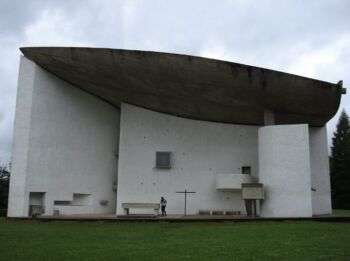
Image source: https://search.creativecommons.org/photos/93d4264e-7c9e-45b0-b39f-484c84c5f769 by Tim Brown Architecture
His Major Design Works
As an interior designer, Le Corbusier produced the LC-1, or Sling Chair, originally titled Basculant, the LC-2, LC-3, and LC-4, which was a Long chair. These chairs were included in Le Corbusier’s Salon d’Automne installation (1929).
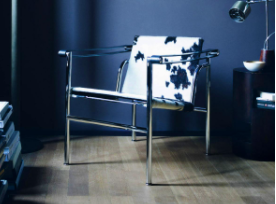
Image source: https://www.smow.com/en/manufacturers/cassina/lc-collection/lc1.html
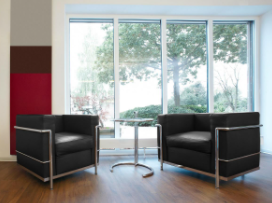
Image source: https://www.smow.com/en/manufacturers/cassina/lc-collection/lc2-armchair.html

Image source: https://search.creativecommons.org/photos/718a3bce-a7ef-429c-a275-4626a8ea2a04 by Tim Evanson
Le Corbusier, owing to his early aspirations, realized several paintings. One of the most remarkable is Still Life (1920), which is a typical Purist piece. In the piece, he purified the color scheme to include only the neutrals—gray, black, and white—and monochromes of green. Additionally, he applied the paint smoothly to enhance the sense of impersonal objectivity.
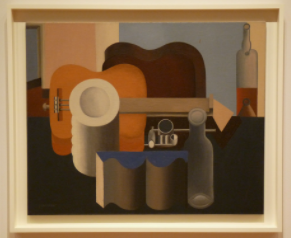
Image source: https://search.creativecommons.org/photos/ab6d9ec2-ac07-49fb-9732-517e41d7a3c2 by Gwen Fran
Finally, as a city planner, Le Corbusier published a book on urbanism called The Radiant City (1933). The book is an unrealized urban master plan, first presented in 1924, that emphasizes effective means of transportation, an abundance of green space and sunlight. Though radical, strict and nearly totalitarian in its order, symmetry and standardization, Le Corbusier’s proposed principles had an extensive influence on modern urban planning.
Key Ideas and Principles
Le Corbusier developed the Five Points of Modern Architecture. These were fundamental rules that rewrote architecture principles in a new, modern context:
- Lift The Building Over Pilotis: The belief that the ground floor of a house belongs to the automobile. Therefore, housing is raised to allow the vehicle’s movement or the eventual green continuity.
- Free Designing Of The Ground Plan: A building’s floor plan should be free from structural condition, so partitions can be better organized.
- The Free Façade: The structure separates from the façade, relieving it of its structural function.
- The Horizontal Window: The façade can be cut along its entire length to allow rooms to be lit equally.
- The Roof Garden: A building should give back the space it takes on the ground, by replacing it with a garden in the sky.
Other key concepts:
- The architectural promenade experienced movement through spaces. Villa Savoye design is based on this.
- Le Corbusier’s city of the future, The Radiant City, provided residents with a better lifestyle and ontributed to creating a better society.
- The Modulor was a universal system of proportions devised to reconcile maths, the human form, architecture and beauty into a single system.
- The Open Hand was a sign of peace and of reconciliation.
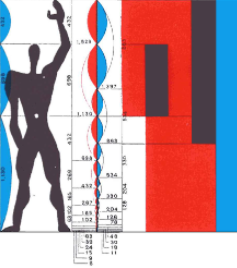
Image source:https://search.creativecommons.org/photos/aa085a08-aa78-4293-ae84-19e66a79eff8 by 準建築人手札網站 Forgemind ArchiMedia
Info sources:
https://www.biography.com/people/le-corbusier-93766
http://www.archdaily.com/411878/ad-classics-ville-radieuse-le-corbusier
https://www.iconeye.com/opinion/icon-of-the-month/item/3815-modulor-man-by-le-corbusier/
http://www.archdaily.com/278569/14-facts-le-corbusier
https://en.wikipedia.org/wiki/Le_Corbusier%27s_Furniture
https://www.britannica.com/art/Purism-art
http://www.archdaily.com/411878/ad-classics-ville-radieuse-le-corbusier

Comments are closed.